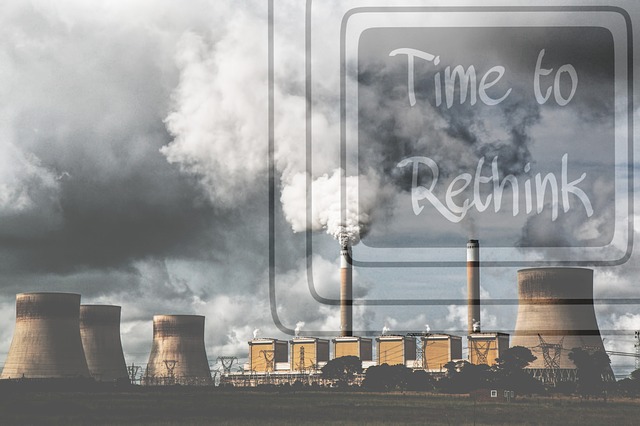Introduction: Nuclear Weapons and Warfare
There is no doubt that Nuclear weapons used in military actions and warfare have no positive impact. Whether that be in terms of environment or humans in general. These result in widespread devastation, killing all wildlife and eradicating all vegetation for miles. They are even more negative effects of nuclear testing alone that result in radiation contamination of land and soil. Nothing can grow there and if it does then there is a high likelihood of it containing trace radioactive chemicals.
When nuclear weapons like missiles and rockets etc. are being tested for range and target efficiency; it releases enormous amount of atmospheric emissions. There are a lot of other impacts on the environment that usually go unseen by humans but severely degrade the microbial ecosystem as well.
Read: What is Nuclear Energy? – Uses, Advantages, Disadvantages
Impacts of Nuclear Weapons on the Environment:
These weapons severely impact the environment by mass destruction.
But prior to that, the assembly and extraction of raw material, manufacturing site, production and storage of waste generated as a result, also has several problems associated with it.
See: What is Ecocide? Causes, Effects, and Solutions
[ 1 ] Raw Materials For Nuclear Weapons
Most raw materials for Nuclear purposes including fuel, construction etc. are derived by mining.
Whether they are metals like aluminum, steel, iron or fuel sources like coal.
Mining processes are not only harmful for the workers health but focusing on environmental impacts; coal mines also have a significant impact as detailed below, but the most crucial one is that of uranium mining.
The impacts caused solely due to raw material extraction and the processes involved are:
- Uranium Mining: Commonly used as a fuel source- no matter how it is extracted uranium generates radioactive waste that is harmful for the environment if disposed improperly and creates heavy rock debris as well. Mining waste and tilling can create a large volume of waste that deteriorates the environment.
- Acid Mine Drainage: when the coal mines are abandoned after coal extraction, the trace amounts of sulfides in the mine combine with air to form Sulfide gas. When this gas escapes into the air and comes into contact with water it forms sulfuric acid. This sulfuric acid can dissolve other metals like arsenic, cadmium or Mercury from the surrounding rock. This then drains into nearby water sources changing the pH of the water, affecting biodiversity and making it unsafe for drinking purposes. The trace metals also disrupt the growth patterns and reproductive capacities of the aquatic life.
Furthermore when this acid is increased in the water due to frequent discharge it causes corrosion of bridge infrastructure in the water. - Methane Gas Emissions: an irrefutable fact of coal formation is that it also always forms methane gas along. This is known as coal seam gas commonly. It can also be used as fuel source but mostly it is released into the air when the mines are exposed. Moreover abandoned mines also accumulate this gas from underground coal mines. The amount of methane gas released is very much for each coal mine. The release of methane gas itself is harmful due it being a GHG and has a negative effect on the global warming as it is 4 times more potent than carbon dioxide.
[ 2 ] Production Of Nuclear Weapons
- Uranium enrichment: once the uranium is extracted, it cannot be used right away. In fact there are several stages involved from crushing the uranium ore to obtaining a yellow cake of uranium until it can be pressed into pellet form. This process of uranium enrichment results in isolating the U-235 isotope from the remaining ore and isotopes. This uranium enhancement or enriching causes heavy metal leaching and wind dispersion of uranium dust.
- Energy consumption: Nuclear weapons production is an energy intensive process and requires significant amount of energy. This releases a large number of emissions into the atmosphere and leaves a large carbon footprint.
Check out: What is Nuclear Energy? – Uses, Advantages, Disadvantages - Water usage: it is well known fact that nuclear reactors use huge volumes of water for cooling. Nuclear weapons manufacture also requires water for different processes and its discharge causes water pollution.
Related: Nuclear Waste Production and Management in Pakistan
[ 3 ] Waste Disposal Of Nuclear Weapons
- Radioactive waste: perhaps the most significant impact of all things nuclear is the radioactive emission it generates. The storage disposal is one of the most crucial aspects of it. If radioactive waste is stored underground improperly in liquid form especially, it will lead to dire consequences as seen in the case of the Kyshtym disaster of 1957.
For more information, read: 10 Major Environmental Disasters In The World
Related: Disastrous Environmental Impacts of Radioactive Waste
CONCLUSION:
Apart from all of the above mentioned points, nuclear weapons on use release huge amounts of emissions, energy and radiation. This releases a ton of emissions that cover more radius miles beyond the site of detonation. The impacts observed in the areas last for more than decades that result in reproductive effects, genetic defects and a myriad of other negative health and environmental effects that are severely detrimental and long lasting.
Also check out, What Are Renewable Energy Sources? – Types of Green Energy
I hope you all liked this post! Please comment below if you have any suggestions, comments, or feedback! We at #envpk love hearing from our readers! Thanks!




